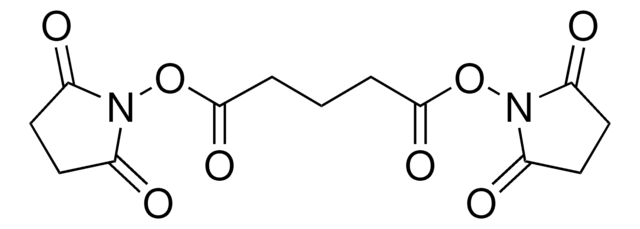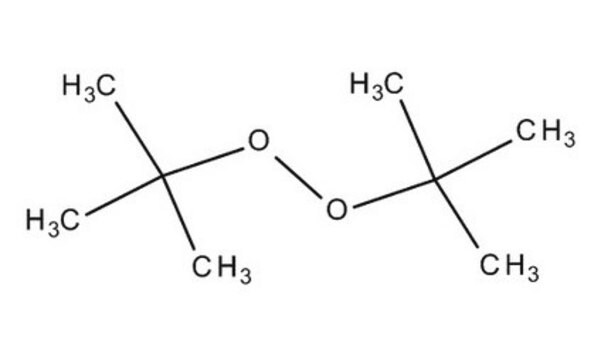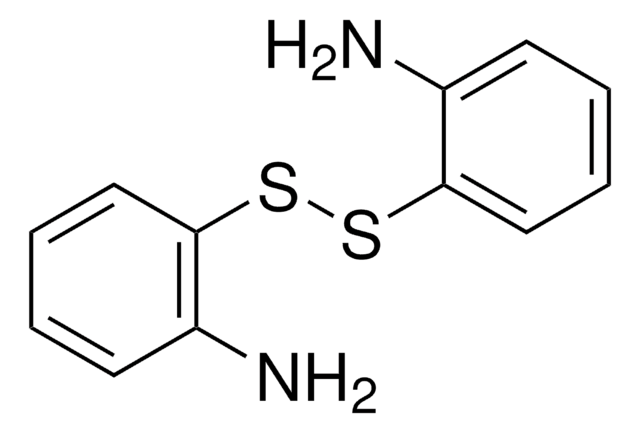D2388
Dimethyl 3,3′-dithiopropionimidate dihydrochloride
powder
Synonym(s):
DTBP, Dimethyl 3,3′-dithio-bis(propionimidate) dihydrochloride, Wang/Richards’ reagent
About This Item
Recommended Products
form
powder
reaction suitability
reagent type: cross-linking reagent
solubility
H2O: 50 mg/mL
storage temp.
2-8°C
SMILES string
Cl.Cl.COC(=N)CCSSCCC(=N)OC
InChI
1S/C8H16N2O2S2.2ClH/c1-11-7(9)3-5-13-14-6-4-8(10)12-2;;/h9-10H,3-6H2,1-2H3;2*1H
InChI key
CQBCVFHLZAVNPF-UHFFFAOYSA-N
Looking for similar products? Visit Product Comparison Guide
Related Categories
Application
- Synthesis of glutathione-sensitive cross-linked polyethylenimine gene vector
- Preparation of cyclodextrin-containing polymers designed for gene delivery
- Crosslinking of chick oviduct progesterone-receptor subunits
Caution
Other Notes
Signal Word
Warning
Hazard Statements
Hazard Classifications
Skin Irrit. 2
Storage Class Code
11 - Combustible Solids
WGK
WGK 3
Flash Point(F)
Not applicable
Flash Point(C)
Not applicable
Personal Protective Equipment
Choose from one of the most recent versions:
Already Own This Product?
Find documentation for the products that you have recently purchased in the Document Library.
Customers Also Viewed
Articles
Kanjiro Miyata (The University of Tokyo, Japan) provides insights on the rational design of polymeric materials for “smart” oligonucleotide delivery.
Our team of scientists has experience in all areas of research including Life Science, Material Science, Chemical Synthesis, Chromatography, Analytical and many others.
Contact Technical Service












